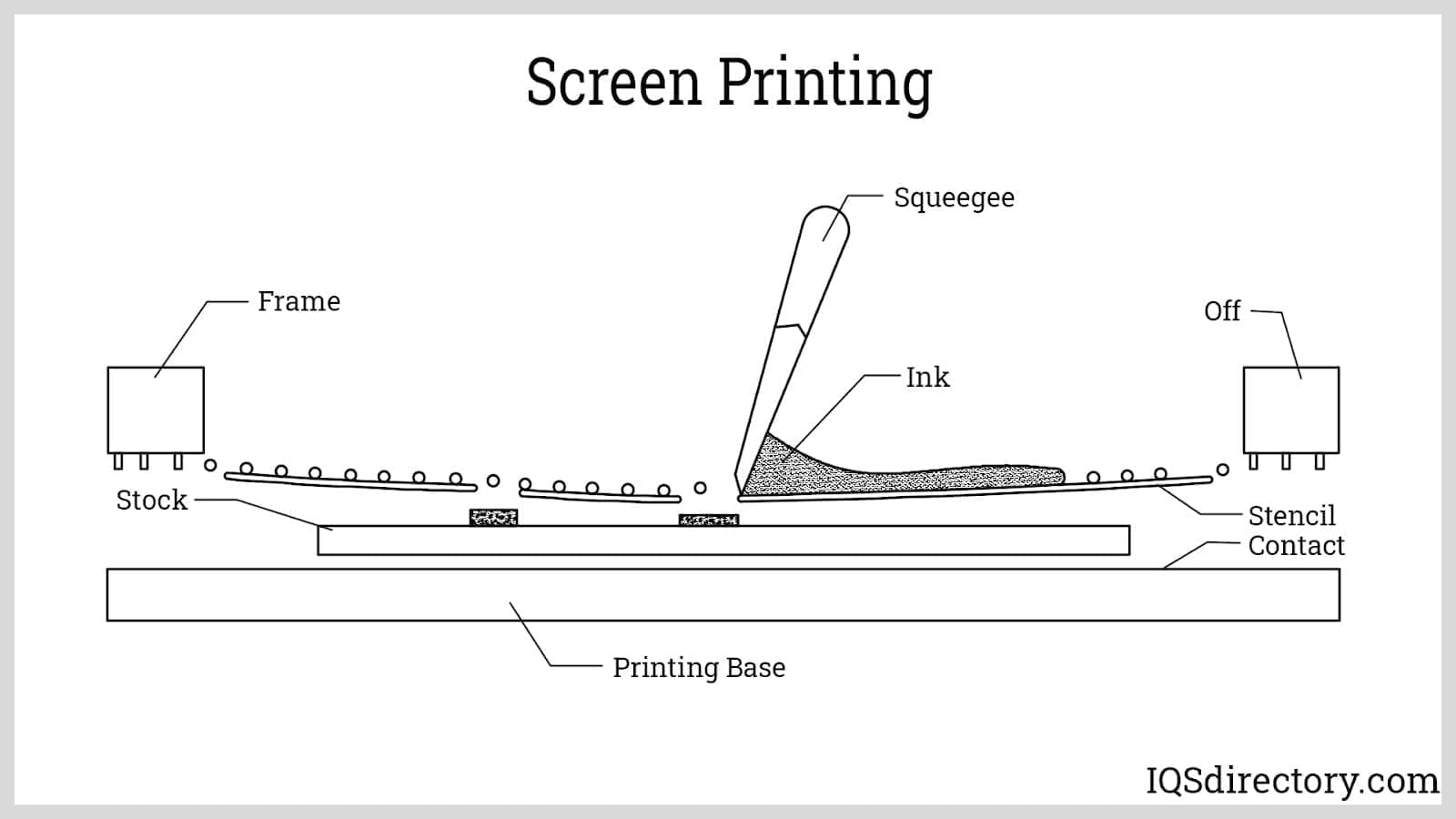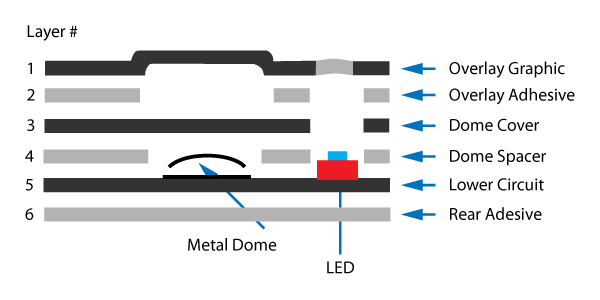How membrane switch increases durability and performance in healthcare
All Concerning Membrane layer Switch Over: A Comprehensive Overview for Beginners
Membrane buttons are vital components in modern electronic devices, providing an unique user interface for individual interaction - membrane switch. Their split building, consisting of overlays and conductive traces, gives capability and sturdiness. Unlike traditional mechanical switches, membrane layer buttons provide a streamlined design and personalized options. Comprehending their vital attributes and benefits can change item layout. The ins and outs of their application and design factors to consider require additional expedition.
What Is a Membrane Switch?
A membrane button is a kind of electrical switch that contains an adaptable membrane layered over a printed circuit card. This design permits a streamlined and compact interface, commonly utilized in various electronic devices. Membrane switches are frequently located in consumer home appliances, medical tools, and industrial equipment as a result of their resilience and resistance to environmental factors.The building and construction usually consists of multiple layers, such as graphic overlays and adhesive backing, which give tactile feedback and safeguard the circuitry beneath. The procedure of a membrane button is launched when stress is related to the surface, completing an electrical circuit.These switches are valued for their flexibility, making it possible for custom designs and printed graphics that cater to particular interface. Their inconspicuous nature minimizes area demands, making them excellent for applications where conventional switches might not fit. On the whole, membrane layer buttons offer a functional and aesthetic service for modern digital gadgets.
Secret Parts of Membrane Changes
Membrane layer switches comprise numerous crucial elements that contribute to their capability and performance. The leading layer, understood as the overlay, provides the user interface and is frequently printed with symbols or graphics. Below the overlay lies a spacer layer, which divides the conductive aspects and avoids inadvertent activation. The next vital part is the graphic layer, which boosts aesthetic appeals and ensures the resilience of the design.Conductive traces, typically made from products like silver or carbon, are printed on the circuit layer. When pressure is related to the overlay, these traces enter contact, finishing the circuit. Furthermore, a backing layer supplies structural assistance and can be made from materials such as polyester or polycarbonate. Together, these parts produce a reliable, straightforward interface ideal for different applications, from household home appliances to industrial equipment. Comprehending these components is vital for any person interested in membrane layer switch modern technology.
How Membrane Switches Over Work
Comprehending just how membrane switches over function is crucial for appreciating their extensive usage in different gadgets. A membrane switch runs through a collection of layers, consisting of a graphic overlay, spacer, and a circuit layer. When stress is put on the overlay, it compresses the spacer layer, permitting the circuit layer to make get in touch with and complete an electrical circuit. This activity sends a signal to the tool, motivating a feedback, such as turning on a light or triggering a function.Membrane changes can be designed with different attributes, consisting of responsive comments, backlighting, and personalized graphics, enhancing individual communication. Their construction permits a covered design, shielding the inner parts from dirt, wetness, and contaminants. This resilience makes them ideal for diverse applications, from customer electronic devices to commercial devices. Generally, the simplicity and performance of membrane layer changes add to their appeal in modern technology.
Benefits of Membrane Switches Over Over Mechanical Switches
While mechanical switches have actually long been a staple in numerous gadgets, membrane layer switches deal distinct benefits that make them significantly appealing. One considerable benefit is their slim account, permitting even more portable styles and better versatility in item advancement. Furthermore, membrane changes feature a consistent surface, which improves visual appeal and streamlines cleaning, making them ideal for environments where health is critical.Another benefit is their resistance to dust and dampness. Unlike mechanical switches, which can be endangered by environmental factors, membrane layer buttons offer a covered user interface that shields against contaminants - membrane switch. Membrane buttons usually have a longer life expectancy due to less relocating parts, resulting in enhanced durability and reliability.Cost-effectiveness is likewise a noteworthy advantage, as membrane layer buttons can be generated in mass with lower manufacturing costs. These factors incorporate to place membrane layer buttons as a useful alternative to typical mechanical options in various applications
Typical Applications of Membrane Layer Changes
Membrane layer buttons are widely utilized in numerous markets, specifically in customer electronics and industrial control board. In consumer tools, they provide a sleek, straightforward interface, while in commercial settings, they improve durability and capability. Recognizing these applications highlights the versatility and usefulness of membrane buttons in contemporary technology.
Customer Electronics Devices
As customer electronics continue to develop, membrane switches have actually come to be a popular option for a variety of gadgets due to their flexibility and sleek layout. These switches are generally found in smartphones, tablet computers, and push-button controls, where area is limited and aesthetics issue. Their reduced account and adjustable styles permit manufacturers to produce user-friendly user interfaces that improve the general user experience. Furthermore, membrane switches are frequently made use of in devices such as microwaves and coffee machine, providing intuitive control alternatives while resisting moisture and dust. The resilience and integrity of membrane layer switches make them appropriate for day-to-day customer items, ensuring durability and regular efficiency. Overall, their integration in consumer electronics shows a mix of performance and modern-day layout.
Industrial Control Panels
The applications of membrane switches expand beyond consumer electronics, discovering considerable use in commercial control board. These switches are preferred for their durability and resistance to severe atmospheres, making them optimal for making and procedure control settings. They supply a reputable user interface for operators to manage machinery, screen processes, and adjust setups. Membrane layer switches can be customized to match particular functional requirements, integrating functions like backlighting and tactile responses, enhancing user experience. Their low-profile layout enables assimilation right best site into various devices, while their capability to endure spills, dust, and extreme temperatures warranties longevity. Generally, membrane layer buttons add to efficient and secure operation in commercial applications, showing their adaptability and performance popular atmospheres.
Factors To Consider for Designing Membrane Switches
When making membrane layer switches, selecting the right products is vital to guarantee resilience and functionality. Additionally, comprehending layer setup methods can greatly affect the button's efficiency and user experience. These factors to consider play a crucial function in producing effective and reliable membrane switch layouts.
Product Selection Importance
Material option plays an important role in the design and performance of membrane layer buttons. The picked materials directly affect the switch's longevity, tactile feedback, and general visual. Secret factors to consider include the substratum, which should provide structural integrity while enabling flexibility, and the graphic overlay, which requires to be immune to wear and ecological factors. Conductive find materials need to ensure trusted electrical efficiency, while adhesives have to offer solid bonding without endangering the switch's operation. Furthermore, compatibility with making procedures and end-user atmospheres is important; materials should stand up to varying temperatures, moisture levels, and chemical exposure. Ultimately, appropriate material selection not just boosts the membrane layer switch's performance however likewise adds to its durability and individual complete satisfaction, making it a vital facet of the design process.

Layer Setup Techniques

Often Asked Inquiries
Just How Lengthy Do Membrane Layer Changes Usually Last?
Membrane layer buttons normally have a lifespan of 1 to 5 million cycles, depending on use and ecological problems. Elements such as style quality and operating regularity significantly affect their toughness and overall efficiency longevity.

Can Membrane Layer Changes Be Customized for Certain Layouts?
Membrane buttons can without a doubt be personalized to suit certain styles, permitting for varied shapes, colors, and performances. This flexibility makes it possible for manufacturers to customize these switches a fantastic read to meet special aesthetic and functional requirements efficiently.
What Products Are Utilized in Membrane Layer Switch Building And Construction?
Membrane buttons are usually constructed using products such as polyester, polycarbonate, and glue layers. These materials give toughness, adaptability, and resistance to ecological aspects, ensuring the buttons function efficiently in various applications and problems.
Are Membrane Layer Switches Over Water Resistant or Immune to Dampness?
Membrane switches can be created to be moisture-resistant, making use of specialized finishes and products. However, their waterproof abilities depend upon construction high quality and details applications, making it important to examine demands for perfect performance in different atmospheres.
Just How Are Membrane Switches Over Fixed if Damaged?
Fixing broken membrane layer switches typically includes replacing the affected layer or circuit. Technicians may also use conductive sticky or make use of specialized repair work kits, guaranteeing functionality is restored without total replacement of the whole button assembly. Unlike standard mechanical buttons, membrane switches present a streamlined design and personalized alternatives. A membrane switch is a type of electric button that consists of a flexible membrane layer layered over a printed circuit board. The operation of a membrane layer button is started when pressure is applied to the surface area, completing an electric circuit.These switches are valued for their versatility, enabling customized designs and printed graphics that cater to specific individual interfaces. While mechanical buttons have long been a staple in many gadgets, membrane layer switches offer unique advantages that make them significantly appealing. Membrane layer buttons normally have a longer lifespan due to fewer relocating components, resulting in boosted longevity and reliability.Cost-effectiveness is likewise a significant benefit, as membrane layer buttons can be produced in mass with reduced manufacturing costs.